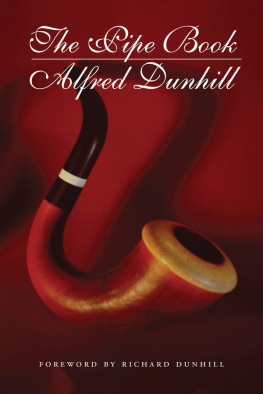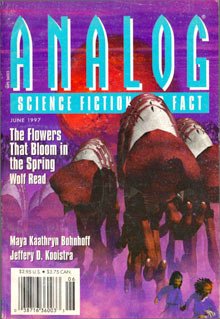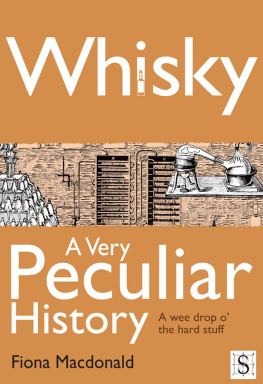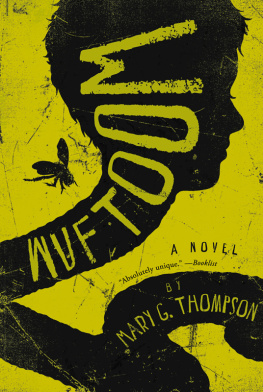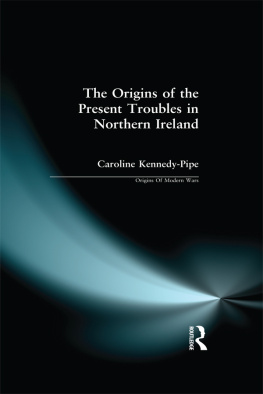Copyright 1999, 2011 by Richard Dunhill
All Rights Reserved. No part of this book may be reproduced in any manner without the express written consent of the publisher, except in the case of brief excerpts in critical reviews or articles. All inquiries should be addressed to Skyhorse Publishing, 307 West 36th Street, 11th Floor, New York, NY 10018.
Skyhorse Publishing books may be purchased in bulk at special discounts for sales promotion, corporate gifts, fund-raising, or educational purposes. Special editions can also be created to specifications. For details, contact the Special Sales Department, Skyhorse Publishing, 307 West 36th Street, 11th Floor, New York, NY 10018 or .
Skyhorse and Skyhorse Publishing are registered trademarks of Skyhorse Publishing, Inc., a Delaware corporation.
www.skyhorsepublishing.com
10 9 8 7 6 5 4 3 2 1
Library of Congress Cataloging-in-Publication Data is available on file.
ISBN: 978-1-61608-049-5
Printed in the United States of America
PREFACE
The story of The Pipe Book cannot be told separately from the story of the company Alfred Dunhill Limited. Like most companies, ours had a romantic beginning.
Alfred Dunhill, my grandfather, was born on 30 September 1872 in Hornsey, north of London. Henry Dunhill, his father, operated a piano warehouse as well as a sack-making business, which expanded while Alfred was a boy to include all manner of accessories for horse-drawn vehicles, the dominant mode of transportation at the time.
Alfred was apprenticed to his father in 1887, at the age of fifteen. Just a few years later, in 1892, a fire gutted the business, and at the age of fifty-one, Henry was attracted to retirement. The next year, he handed over control of the business to his son Alfred, who was a mere twenty-one years old.
In the few years that Alfred had been with the business, the world had made great headway in one of the most significant technological developments to affect mankind: the motorcar. It was here that Alfred Dunhill saw the future. (In fact, it is believed that Alfred became the proud owner of the third motorcar to appear on the open road in Great Britain.) So he immediately established a separate business, Dunhills Motorities, to cater to the needs of this new form of transport.
Success was almost immediate; in the following few years the business expanded rapidly, and in 1902 included a shop that sold motoring accessories and clothing for ladies, gentlemen, and chauffeurs. On 21 November 1904, Alfred Dunhill filed patent application number 25,261 for a windshield pipe, granted the next year with the following specification:
indispensable to the cyclist, the sportsman, the yachtsman, the automobilist, the billiard player The shield, which is the feature of this pipe, prevents all inconvenience and danger of flying sparks or ash to the smoker and others when travelling on buses, tramcars, motor-cars, cycles, boats, etc. It ensures a cool, economical smoke, even in a gale. It overcomes the necessity of pressing down the tobacco after lighting, thus providing a free cool smoke, avoiding caking of tobacco, burning of fingers, or soiling of gloves.
Thus was born Alfred Dunhills first pipe, and a new passion.
In 1907 he opened a tobacconists shop in fashionable Duke Street, St. Jamess. London was a city of small shopkeepers, among them Alfred Dunhill. He went from strength to strength because of his high quality standards, attention to detail, and what was almost an obsession with the standard of service to the customer.
The shop was luxurious and refined, Alfred did the blending himself, and, like so many of his enterprises, it was an instant success. Pipe smokers were returning to the shop for more of their favourite and personal tobacco blendsMore of my mixture, pleaseand so the My Mixture book was started. Over 36,700 individual blends, made up specially for customers, are now recorded in these volumes.
The shop also carried smokers requisitesamong them lighters, cigarette cases, cigarette holders, cigar cases, cutters, and tobacco pouches. He hung this sign in his window: SirCan you speak of your pipe as a friend? If it is hot or fails to soothe, then consult Alfred Dunhill within, who will blend a tobacco suitable for your palate.
From the very beginning, the shop carried pipes, made elsewhere. But these fell far short of Alfreds conception of quality. At first the shop offered repair work, and then, in 1910, pipe workshops were opened in Duke Street, producing pipes that sold at double the prices of other makers. The White Spot was introduced a few years later, to guide smokers to the proper orientation of inserting mouthpieces to stems.
Alfred was joined in the business by his brother Herbert, who had an astute business acumen and looked after the financial side of the business, leaving Alfred to initiate and develop productsthe perfect committee of two. The increasing success of the business was achieved more by word of mouth and recommendation than by commercial advertising. On the other hand, brilliance at marketingand a certain degree of accidentplayed major roles, as in this ingenious campaign during the First World War:
Many of our customers were officers serving in the trenches of northern France. Whenever orders were received for a Dunhill pipe, Alfred sent off a box of twelve of them with a note suggesting that the others be offered to fellow officers. Invariably, all of them were sold rather than given away, and not only to the British but also to the Americans, Canadians, French, and Belgians. Such a box of pipes would also contain a roll of toilet tissue with a note that it might come in usefulfor the box was sealed with a label reading Castor Oil, without fail averting the prospect of pilferage.
By the end of the war, in 1918, the Dunhill pipe was known worldwide. Riding high on this rapid expansion of fame, in 1921 the firm was granted its first Royal Warrant, as Tobacconist to Edward, Prince of Wales.
It was, I suppose, only natural for my grandfather, who always became deeply involved with everything he did, to form a collection of pipes from around the world. In the early days these pipes were on display in the shop. This collection was extensively cataloged, and an archivist was employed to consolidate a comprehensive knowledge of pipes. Consequently, the companys expertise in the area grew, as did the firms authority and reputation.
From the archives and the cataloged collection emerged an obvious, equally ambitious endeavour: The Pipe Book . First published simultaneously in London and New York in 1924, it was received with great enthusiasm by pipe smokers. It has rarely been out of print in the three quarters of a century since, and has always been regarded as a comprehensiveif somewhat eccentricreference work, and, for collectors in particular, an invaluable guide.
That wonderful collection was, sadly, severely damaged in the Second World War, during the bombing raids on London. All the pipes, or what remained of them, were put into tea chests. It became my task to reestablish the collection by sorting, cleaning, and identifying each exhibit. I then had to mount the collection on display boards, by continent, in our newly rebuilt shop in Duke Street.
I joined the company in 1948, when the country was still suffering from postwar austerity and extensive shortages of raw materials. My first job, in the wholesale department, was thus made simple: we could supply only about half the merchandise that customers ordered, and consequently we encountered no back order problems.
The first departure from a totally smoking business started more by accident than by design. When we opened our shop in Paris in 1924, we were set back when the French tobacco monopoly refused to grant us a licence to sell tobacco products. In order to fill up the empty spaces, the manager decided to obtain gift items such as china, glass, and lacquerware. This idea worked so well in France that we decided to do the same in London and New York.

